In the middle of the North Atlantic Ocean, 18 volcanic and rocky islands with only 49,000 inhabitants 70,000 sheep are self-governing archipelago, part of the Kingdom of Denmark.
My first trip to Faroe Islands started on 30th April from London Heathrow with connecting flight via Copenhagen. Another option for travellers from the UK is via Edinburgh.
High season in Faroe Islands starts from June and ends in August, so people who like tranquillity, should consider travelling in May or September. Short break in Faroe Island can be done in 3 nights / 4 days and those who wish to travel longer can check our package of Classic Faroe Islands Fly-Drive.
Last year, when my colleague went to the Faroe Islands at the end of April, she had fantastic weather with loads of sun. Unfortunately, this year at the same time it was cooler. We experienced sun, rain, snow and wind in one day! Faroese people often joke that you can have all five seasons in one day (whatever the fifth season is…).
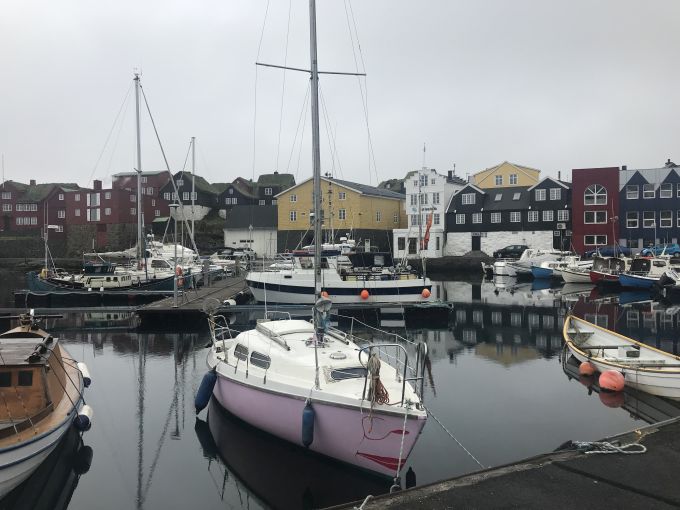
Torshavn harbour
A scenic bus journey took about 45 minutes from Vagar airport to the capital of Faroe Islands – Torshavn. The capital is the biggest city in all the islands and my first impression was excellent. I didn’t expect to see many bars, restaurants and cafes! I was expecting to see a small village with a few houses only. The city is growing every year and a new Hilton hotel is currently under construction (expecting to be open in May 2020). Torshavn is growing little by little, but it keeps its authenticity and uniqueness. New houses are kept in the old-style colours with grass rooftops. Grass rooftops were invented over a thousand years ago to keep thermal insulation and were also a protection from rain. The Faroese have kept this unique rooftop tradition up to the present day. If you see sheep grazing the roof grass, don’t worry – it is a usual Faroese grass cutting technique.
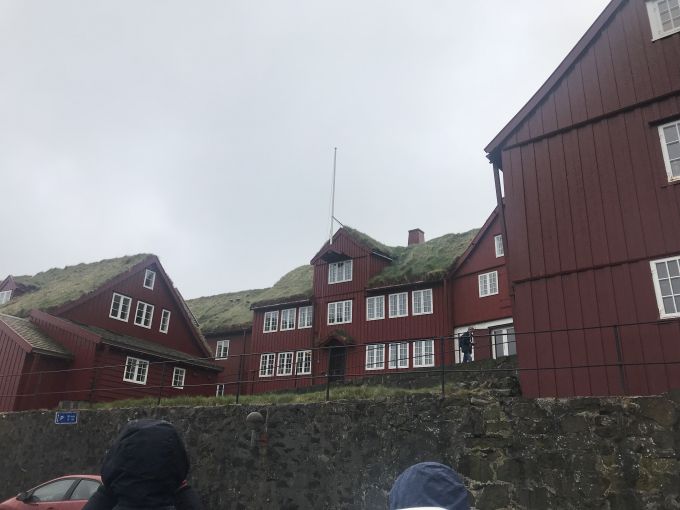
Ministry of Finance, Torshavn
Sandoy Island
To reach Sandoy Island you have to drive to Kirkjuborg harbour, where a ferry can take passengers and vehicles at the same time. The ferry trip takes about 30 minutes. The ferry was comfortable, with WC and free WiFi.
Hotel Skalavik is the only hotel in Sandoy Island and our group stayed there. It is quite a basic 3-star hotel, but clean and comfortable for a short stay. Breakfast, lunch and dinner is available at the hotel’s restaurant and 10 mins walk from the hotel you can find a cosy, old style interior café “Molini”.
The next day we had small ferry (24 seats only) going from Sandoy to Skuvoy. Skuvoy Island doesn’t have roads or cars. This small island is famous for hiking and visiting locals. Sandoy has only 90 inhabitants. We met the family of Tummas and Elisabeth, who live in Sandoy and host visitors. Elisabeth prepared us tasty waffles, hot drinks and Tummas guided us for 8 km hiking trip, up to the highest point of the Island.
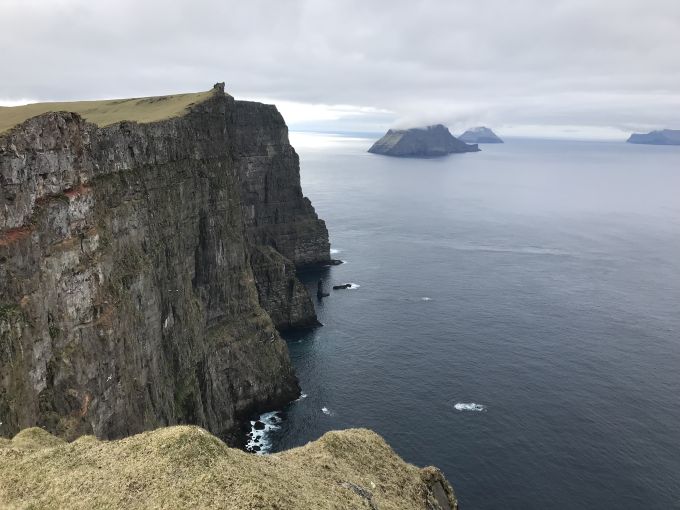
Highest point of Sandoy
After hiking in Skuvoy, we took the ferry back to Sandoy Island, where we had tour of the Basalt Museum and a short stop at the biggest post box in the world (included in the Guinness record book).
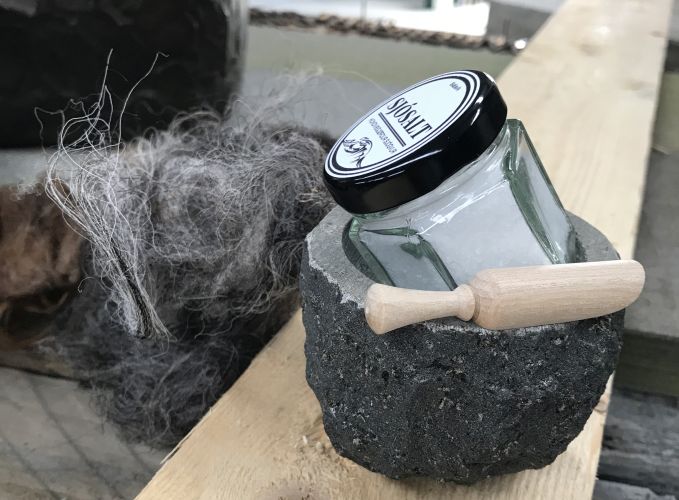
Souvenir from Basalt Museum, Skuvoy
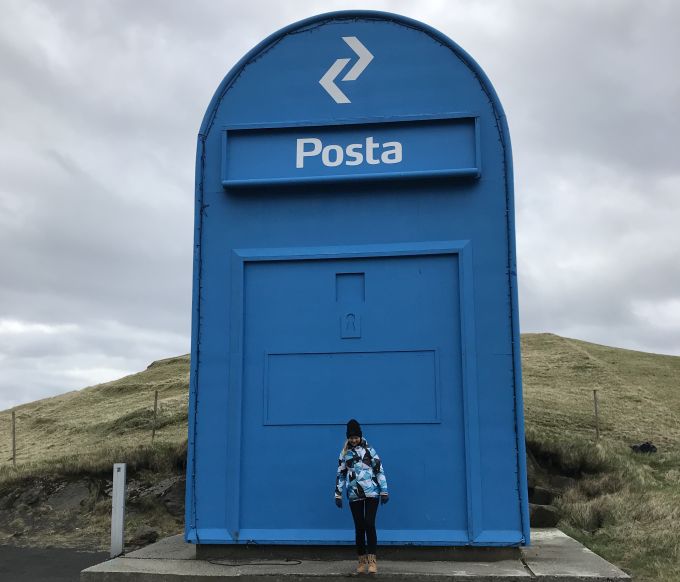
Biggest postbox in the world
Our wonderful day finished with BBQ dinner at the Hotel Skalavik. Three wooden BBQ cabins are perfect shelter for unpredictable Faroese weather.
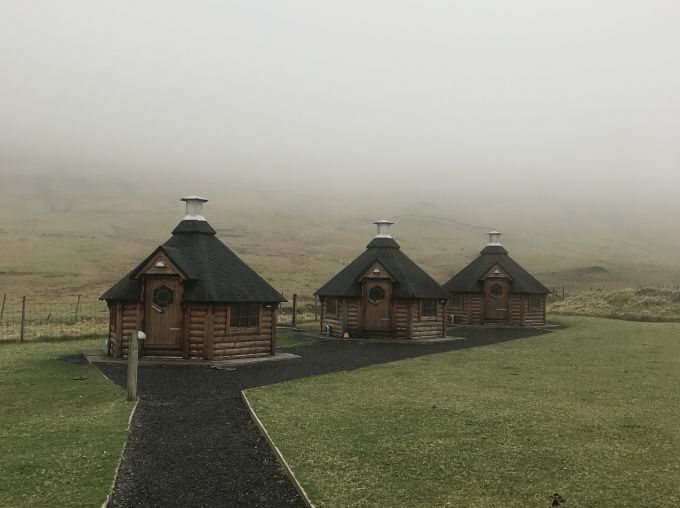
BBQ Cabins in Hotel Skalavik
RIB Safari
One of my favourite activities is RIB safari and I’m glad we had an opportunity to experience it in the Faroe Islands. Once we returned from Sandoy to Kirkjuborg harbour, we got our RIB gear and sped up to Hestur Island, to see the caves. Cold wind blew through our faces, but it didn’t stop us enjoying every minute. Colourful caves, stony cliffs, pure water, loads of birds flying around and even a few puffins were seen that day!
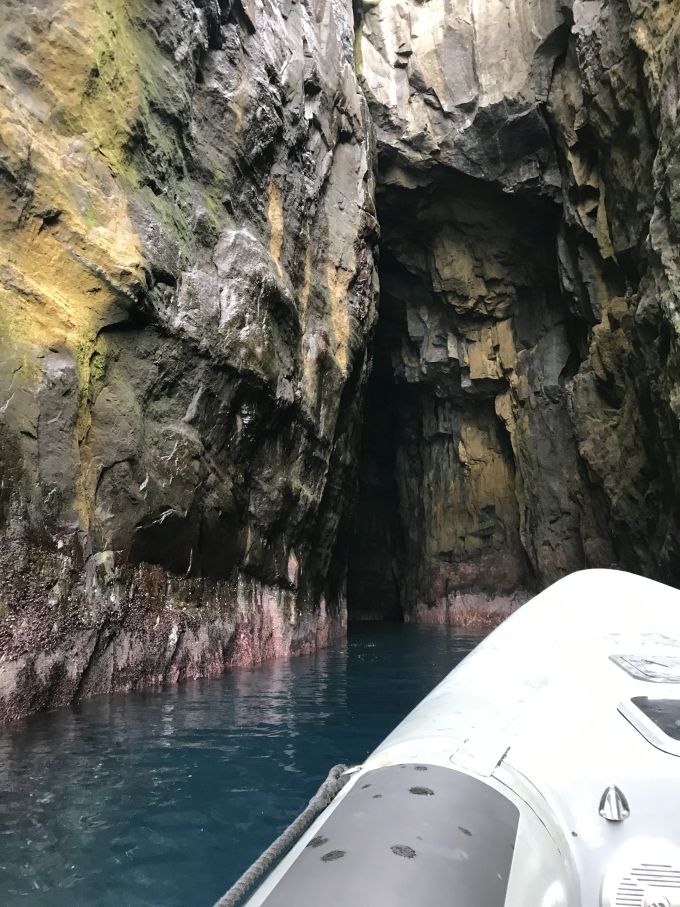
RIB to Hestur Island caves
Last day tour
Our planned boat tour was cancelled due to the weather conditions. It was a very strong wind and we had to be ready for any cancellations on that day. However, our boat journey was replaced by a bus tour and it wasn’t bad at all. We were driven through the scenic roads of Faroe Islands and enjoyed several stops. We met more local people and had a local lunch in a small village called Gjogv. The Faroese are very warm people and they welcomed us as if we were the family they haven’t seen for a long time. We had a chance to listen to old local songs, stories about life in this remote place, meet happy local people, who appreciate the different lifestyle. Coming from busy London it was an incredible and peaceful place, fresh weather, totally different environment and most important – a memorable experience.
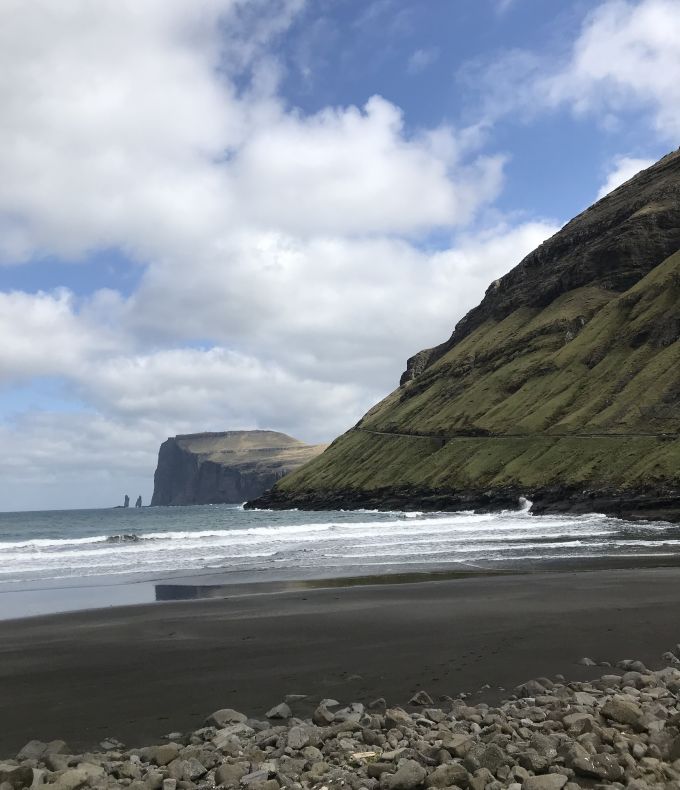
Gjovn, Faroe Islands
More information about Guided Faroe Islands tour.
If you wish to travel to Faroe Islands, please contact us.
Julija Leliunaite,
for Baltic Travel Company ( all rights reserved for Baltic Travel Company )